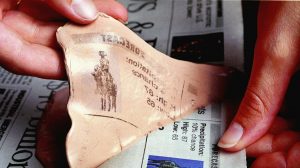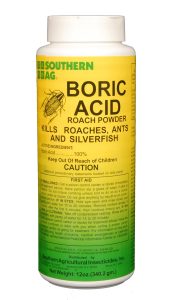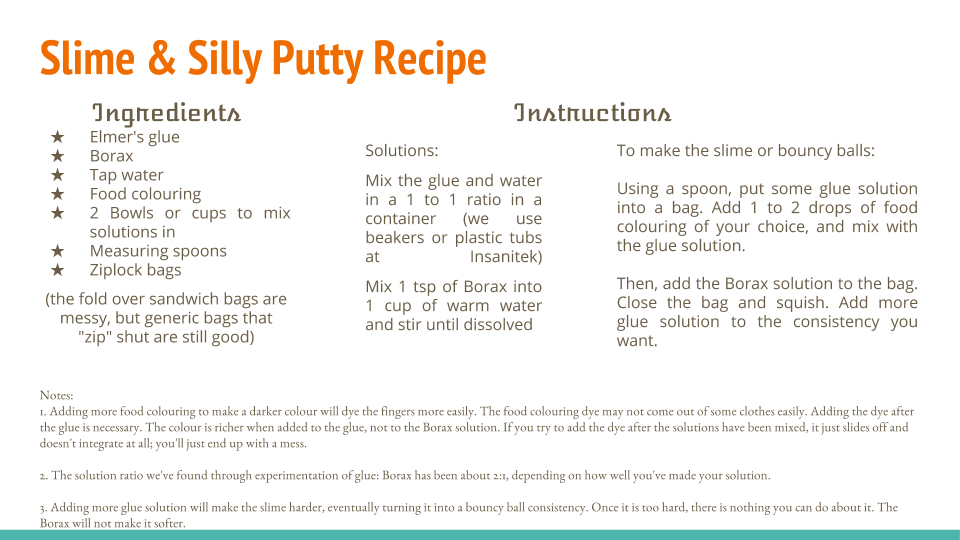
Silly putty is a toy that entertained and fascinates many still today. Instead of being a store-bought item of entertainment, many make it at home, turning it into a great DIY party for kids of all ages.
Silly Putty started out as a purposeful accident.
Back in the early 1940s World War II was going on. The Japanese attacked rubber-producing countries, thus leaving America in a bind. They needed rubber to make the soles of shoes (specifically soldier’s boots), tires, life rafts, and more. The government asks scientists to come up with a synthetic solution that they could use. Enter a race to a scientific discovery – and one that would fail spectacularly (“The Incredible Origins Of Everyday Items,” 2013).
James Wright worked in the New Haven, Connecticut lab in 1943 while he was tasked with finding a solution to the rubber problem. He thought he found the solution when he mixed boric acid with silicone oil. After all, this created a putty that could be stretched, moulded, and bounced. It turned out that it was a terrible rubber because it can also shatter (Discover, n.d.). Since it wasn’t a good rubber, Wright sent it to other scientists to see what they could do with it (“Silly Putty was Invented by Accident,” 2011).

The goo Wright made laid in obscurity for 6 years until a salesman by the name of Peter Hodgeson and toystore owner Ruth Fallgatter rebranded it into a child’s toy (“15 Facts About Silly Putty,” n.d.). At first they called it bouncing putty, and it was their second best seller (after Crayola Crayons). But soon, the goo earned the name Silly Putty and was packaged in red eggs for the Easter holiday.
DIY Putty is not the same.
Today the familiar recipe for making Silly Putty at home for parties is borax soap, white glue, and water. Additives are usually a few drops of food colouring and a pinch of glitter. These are all things you can find at a supermarket.
The exact composition of the original Silly Putty was a lot more complicated with 65% dimethyl siloxane (hydroxy-terminated polymers with boric acid), 17% silica (crystalline quartz), 9% Thixatrol ST (castor oil derivative), 4% polydimethylsiloxane, 1% decamethyl cyclopentasiloxane, 1% glycerine, and 1% titanium dioxide (“Silly Putty was Invented by Accident,” 2011).
Trying picking those up from a supermarket. Technically you could get the boric acid from the hardware store – it’s used to kill cockroaches. Not exactly non-toxic (“Boric acid poisoning: MedlinePlus Medical Encyclopedia,” n.d.), but you could get it. And rid yourself of any bug problems you might have.
More than one way to DIY
Up until recently I had no idea that there was more than one way to make putty at home. I knew of the borax/glue/water mixture we used at the museum for slime, which I then brought to Insanitek. Here is the tried and true recipe we’ve been using to teach polymers while making slime, putty, and bouncy balls:

It turns out, however, that some people use a combination of liquid starch + glue. Or laundry detergent + glue. There is also a messy baby powder and glue, which comes with a caution not to use it on any surface that isn’t easily cleaned (“How to Make Silly Putty,” n.d.). In the recipe above, to make slime you put slightly less glue solution into the mix. With bouncy balls, you put slightly more of the glue solution.
What about the other DIY recipes?
Frankly, after finding out that there was more than one way to make this, I want to see if there was a huge difference in the way they felt and performed. I want to invite Slimers around the world to donate their recipes (post or video) along with their impressions on how the different recipes feel and perform. Fluffier? Stiffer? Slimier? Stickier?
We want all the slime and putty videos you can want to share. Write in or tag us on social media to have us share your work.
